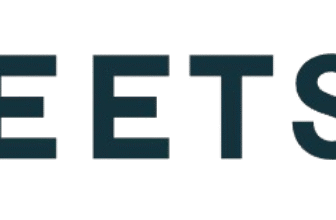
The Voice-Over Home Studio Dilemma: Where To Record?
[ad_1]
For the voice-over actor who works from a home studio, it can be a challenge to figure out where and how to setup the recording area, or “booth,” in the home or office. I would like to shed some light on this. And by the way, if you’re still in the process of acquiring equipment for your actual recording studio, I encourage you to read my article, “Today’s Home Studio for Voice-Over Artists.”
One of the big misunderstandings about establishing a place to record is that a perfectly sound-proof area is necessary. Fortunately, this is not true. Complete or near-complete sound isolation requires professional construction and treatment, which is very expensive.
First off, the type of microphone you have makes a difference. Most beginners don’t invest in the “large diaphragm condenser” microphones you hear about–the reputable ones are just too expensive. They’re also almost too sensitive and require a highly treated recording area. For beginners, I recommend a smaller condenser microphone like a Blue Spark, which costs only $200. This microphone is wonderful at picking up vocal frequencies, while at the same time, filtering out ambient and other low-level noise. By using this kind of microphone along with the noise-removal capabilities that most recording software has, you can produce high quality audio even if you’re not in a sound-proof environment.
The first “rule” when establishing a place to record is that you don’t want sound to bounce around. So don’t record next to the large bedroom or office window. Don’t record where the walls are flat, smooth and reflective, like the bathroom. Record where sound gets absorbed. To address this, many start off in their closet. As amusing as that sounds, closets are great because the clothes hanging around you absorb sound nicely.
If you’re in a bedroom or office, hang thick blankets over the windows and even the walls. If you can’t use blankets or don’t have enough, there’s acoustic paneling and what they call “bass traps,” especially for the corners. Unfortunately though, this stuff can be pricy. Whatever you do, give yourself some space for your voice to travel around a bit. It’s especially important for sound to be absorbed if you’re in a small and confined area, otherwise you’ll get a “boxy” and unnatural sound.
I personally started in my office right next to my closet, as opposed to in it. With one side of my “booth” open to the closet, I surrounded the other sides with walls of foam from an old futon mattress. Many would say foam isn’t enough as it only absorbs the high-ends, but leaves the lows, creating an imbalance. But, my little recording area had no ceiling and the back was open, so that didn’t matter. It really didn’t do much at all for sound isolation, and I could rarely record when my kids were home or when the dog was barking. But with this first setup, plus my software’s ability to eliminate ambient and background noise, I recorded almost 40 ‘explainer’ videos, several radio ads, and nine audiobooks–and I didn’t have to buy anything extra.
As you go along and start earning, you can enhance your recording space. Some eventually either construct their own booth if they have the skills, or invest in a Whisper Room. “Whisper Room” is actually a brand name for several types of pre-built sound booths you screw together. News crews carry portable versions of these they setup wherever they’re broadcasting. They’re pricey, but you can sometimes find them used for much less.
Finally, if you want to purchase (or make) something smaller and cheaper, you can go with these little portable booths which are essentially a box lined with acoustic paneling that your microphone sits in. I’ve known traveling voice-actors who either use this, or really go makeshift and use a pile of hotel pillows in the corner to trap sound.
So don’t make too big a deal about where to record. Just make it as quiet as possible and then jump in and start recording. You’d be surprised what you get done just by being a little resourceful.
[ad_2]
Source by Kelly Libatique



